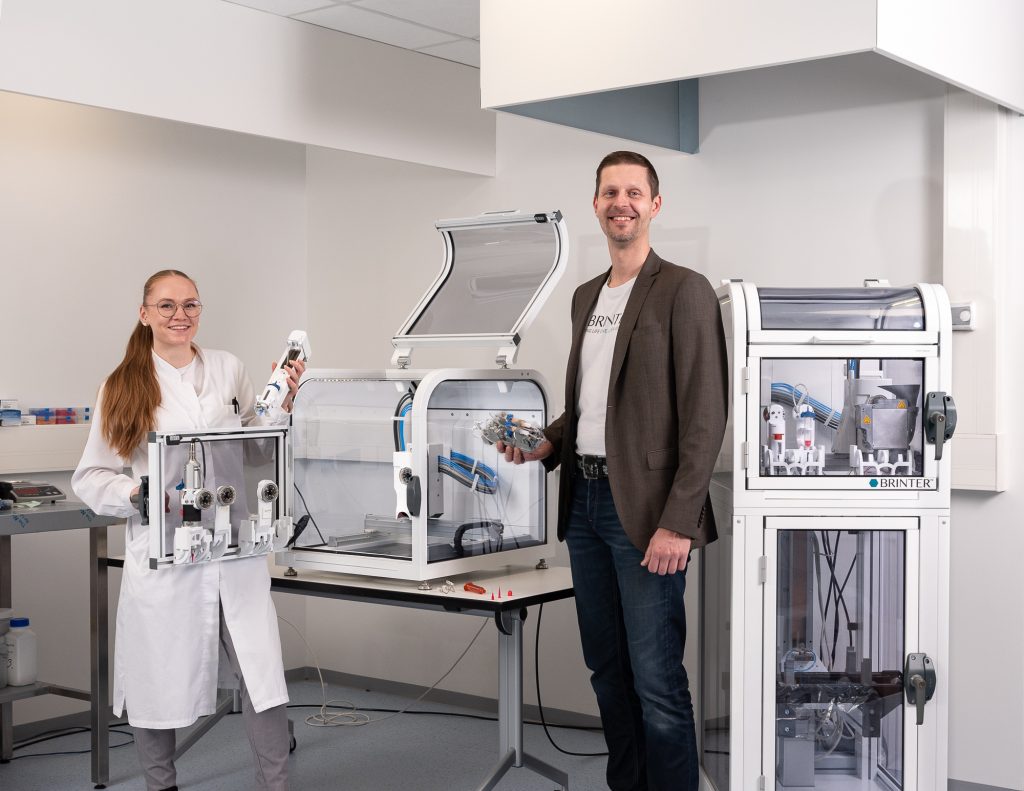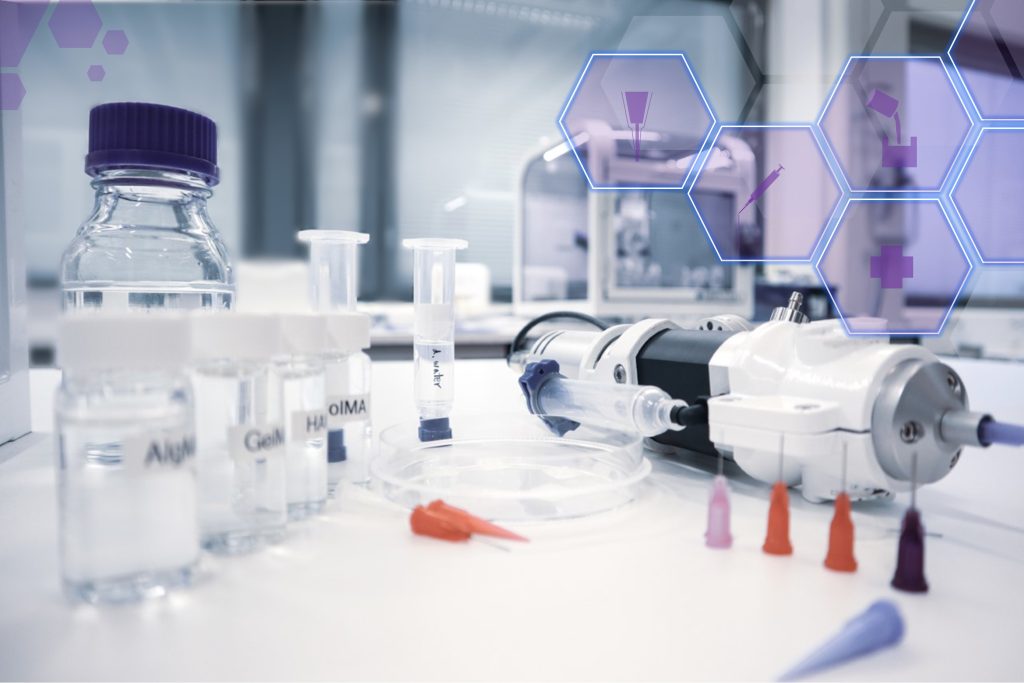Finland-based bioprinting firmBrinterhas launched what it claims is the world’s first multi-material, multi-fluidic bioprinting printhead.
Designed for use with the firm’s own 3D bioprinters, thedigital multifluidic printing tool headis currently undergoing pilot testing with a limited number of customers. Aimed at research institutions and pharmaceutical companies, the device is defined by its extensive material capabilities and hopes to enable higher-precision tissue engineering and regenerative medicine applications, including tissue damage repair, biological function replacements, and localized disease treatments.
汤米•Kalpio Brinter首席执行官说:“这些内在的关键ieving this world-first was the accumulated experiences of our team members utilizing our proprietary hardware architecture, software, and fluidic automation system knowledge to make complex fluidic circuits, which have near zero dead volumes to save resources and to avoid cross contamination with other materials.”

3D bioprinting with Brinter
Established in 2020 as a spin-out from 3D printing service bureau3DTech Ltd, Brinter specializes in 3D bioprinters, inks, and related hardware for customers in the pharmaceutical, biotech, research, and cosmetics sectors. The company currently has clients in over ten countries such as the USA, the UK, and Germany, includingNanoform,Johannes Gutenberg University of Mainz,University of Oulu, and theUniversity of Helsinki.
Last year, Brinter made headlines when it secured€1.2 million in seed fundingto expand its day-to-day operations and bring its bioprinting offering to the US and European medical markets.
The company’s debut bioprinter is its flagshipBrinter One, a multi-material deposition-based machine that works with both stiff and soft cell-laden hydrogels. More recently in November, Brinter also launched anentry-level model called the Brinter Core. Designed to make bioprinting as accessible as possible, the Core is around half the size and cost of its predecessor.
March 2022 was also an active month for Brinter, when it partnered with extrusion technology developerPuredyneto launch itsnew Visco Bio printhead. Shortly after, the firm teamed up withTampere University’sKellomäki Lab Biomaterials and Tissue Engineering Group todevelop new bioinks for use with the technology.

The first multi-material, multifluidic printhead
The most noteworthy feature of the new multi-material printhead is its ample tunability. It’s possible to modify the hardware with different temperature control and imaging options to make it compatible with a wide variety of material types. According to Brinter, the printhead is capable of printing up to 4,096 different material combinations in a single build.
没有这个可调谐性,一个新的打印头required for every type of printing material, which is greatly inconvenient when processing granulates, pastes, and liquids. The list of material capabilities also includes hydrogels with living cells, biopastes, metal-infused binders, and even polymers.
Kalpio states that the printhead serves to bridge the gap between the micro/nano/pico/femto fluidic environments and the bioprinting environment, granting users the utmost level of deposition precision.
As such, the number of potential Brinter use cases is significantly expanded. The company claims customers will be able to generate gradients across their bioprinted structures, program the cells in the droplets to make personalized drugs, and even functionalize printed materials to perhaps one day target cancer cells or heal and regenerate tissues.

Subscribe to the3D Printing Industry newsletterfor the latest news in additive manufacturing. You can also stay connected by following us onTwitter, liking us onFacebook, and tuning into the3D Printing Industry YouTube Channel.
Looking for a career in additive manufacturing? Visit3D Printing Jobsfor a selection of roles in the industry.
Featured image shows Brinter’s portfolio of bioprinting systems, modules and inks for medical, research and cosmetics clients. Photo via Brinter.



